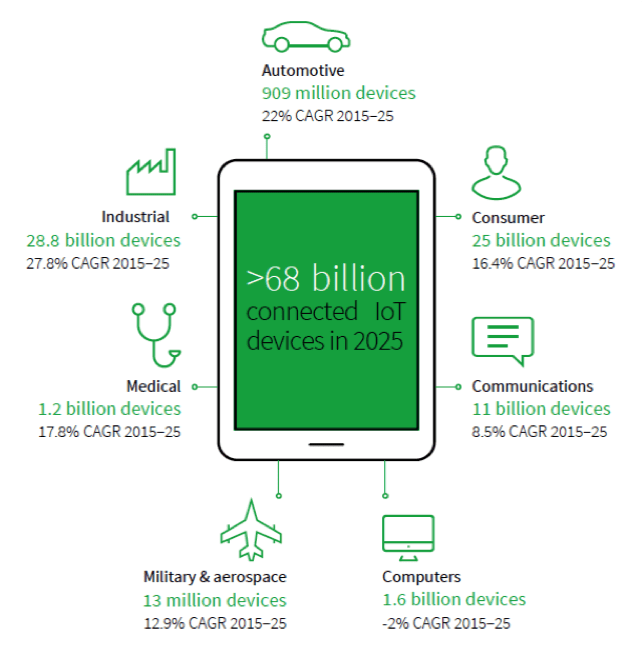Which industries will be transformed the most by the internet of things? Not computing, communication, or even consumer devices, according to the analysts at IHS Markit. Manufacturing and heavy industry will see more connected devices than any other part of the economy, according to the firm’s projections.
Analyst Lee Ratliff of IHS Markit recently joined an Enterprise IoT Insights webinar to discuss embedded IoT design. He said his firm projects that more than 68 billion devices will be connected to the internet by 2025.
IHS Markit projects that the industrial and consumer sectors of the economy will account for the vast majority of IoT connections. The industrial segment does not include automotive, military or aerospace and the consumer segment does not include smartphones.
Industrial IoT connections are projected to grow at a compound annual growth rate of 27.8%, reaching 28.8 billion by 2025. Consumer device connections will not grow as quickly, but because so many consumer devices are already connected, they will be almost as numerous as industrial connections eight years from now, according to IHS. The firm projects 25 billion connected consumer devices in 2025.
The third largest category of connected devices will be communications devices, according to IHS. This market will grow at a compound annual rate of just 8.5%, the analysts said, and will reach 11 billion devices by 2025.
Automotive connections are expected to grow at a compound annual growth rate of 22%, and by 2025 909 million cars are expected to connect to the internet. That projection implies that well over half of all cars on the road will be connected, because analysts expect a global total of 1.5 billion cars in 2025.
Medical and military connections are both expected to see double digit growth. IHS projects 1.2 billion connected medical devices by 2025, and sees this market growing at a compound annual rate of 17.8%. The firm expects 13 million connected military and aerospace machines, and sees this market growing 12.9% a year.
The computer market is the one segment projected to contract over the next eight years, because tiny computers will be embedded in so many other devices. IHS expects the market for standalone computers to contract at a compound annual rate of 2%, and foresees 1.6 billion computers worldwide in 2025.

